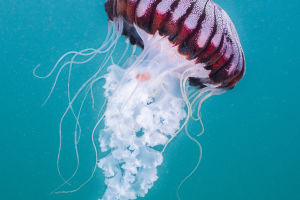Camels are members of the genus Camelidae, and there are only two species that exist today.
Humans began domesticating camels as draft animals for carrying and riding as early as 3000 BC, particularly in desert regions where they became vital to the livelihoods of camel herders in many countries.
Dromedary camels, characterized by their short hair, primarily inhabit tropical regions such as North Africa, West Asia, and India. The desert-dwelling herders rely on camel milk as a significant part of their diet. Currently, there are approximately 14 million domesticated dromedary camels worldwide.
Camels are social animals, usually found in small herds of 10-20 individuals. They are predominantly active at night and seek shelter in shaded areas to rest during the day. Their remarkable ability to store water within their bodies enables them to survive for days without drinking.
Their unique body structure and physiology make camels well-adapted to the harsh desert environment, enabling them to withstand extreme heat and prolonged periods of drought.
Firstly, the physical characteristics of camels contribute to their desert adaptation. They possess long legs and large feet, facilitating easy movement across the sandy terrain. Their elongated legs enable swift running in the desert, while their broad feet prevent them from sinking into the sand.
Moreover, camels have distinctive humps on their backs that store fat, serving as a source of sustenance during scarce food availability. Additionally, the humps aid in regulating the camel's body temperature, providing a cooling effect amidst the scorching desert heat.
Camels are capable of consuming a variety of plants, including grasses, leaves, bark, and even cacti. They possess a robust digestive system that breaks down cellulose in plants, extracting vital nutrients.
Secondly, camels possess physiological adaptations that enable them to endure extended periods without water. Their bodies exhibit a specialized metabolic mechanism that maintains normal physiological functions in the absence of water.
When camels drink water, they can store substantial amounts within their bodies for future use. Additionally, camels possess a unique type of urine that assists in water conservation. By concentrating their urine, camels minimize water loss, enhancing their ability to survive in arid environments.
Camels boast several other adaptations suited to desert life. They possess the ability to close their nostrils, preventing dust from entering their respiratory tract. Furthermore, camels reduce water loss by producing less urine and sweat.
These adaptations enable camels to endure prolonged drought and high temperatures without succumbing to severe dehydration or heat exhaustion.
In addition to their adaptability, camels serve as a means of transportation and a valuable asset for nomadic communities that have settled in desert regions. They also attract tourists who seek to experience the beauty and power of these magnificent creatures in Africa and the Middle East.
Despite their remarkable resilience, camels face various threats. Habitat destruction and the development of previously undisturbed lands pose significant challenges to their survival. Illegal hunting and trafficking of camels continue to be issued, resulting in the killing of tens of thousands of camels each year in some areas.
Furthermore, camel racing, often involving llamas, is sometimes conducted for entertainment purposes, which raises concerns about their well-being.
Camels represent an extraordinary and remarkable animal, showcasing adaptability, tenacity, and strength. It is imperative that we take all necessary measures to protect these creatures and recognize them as valuable treasures with which we share our planet.


